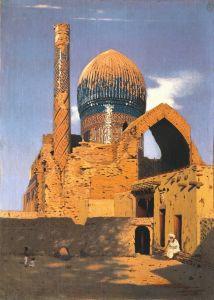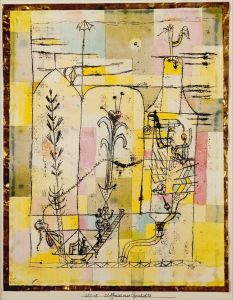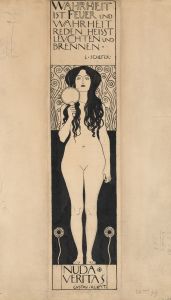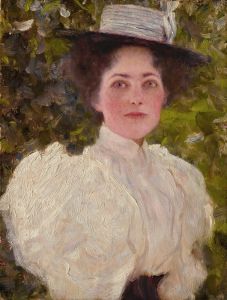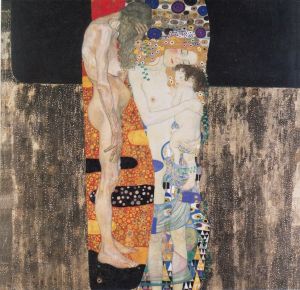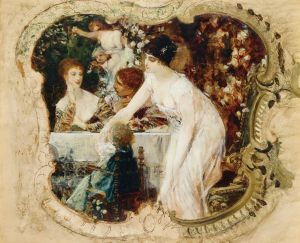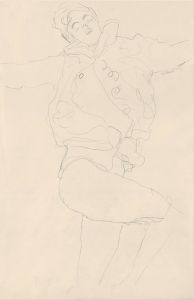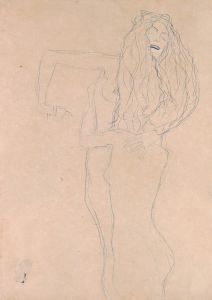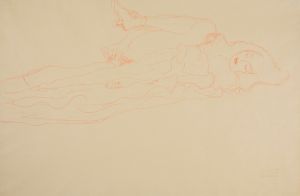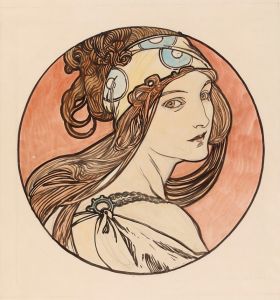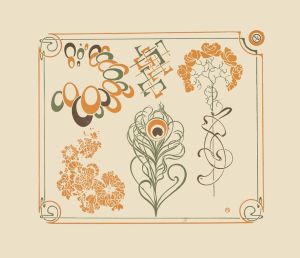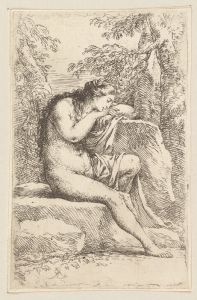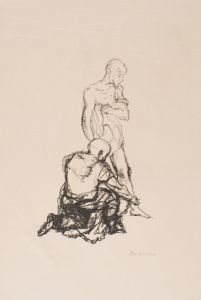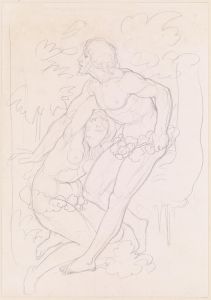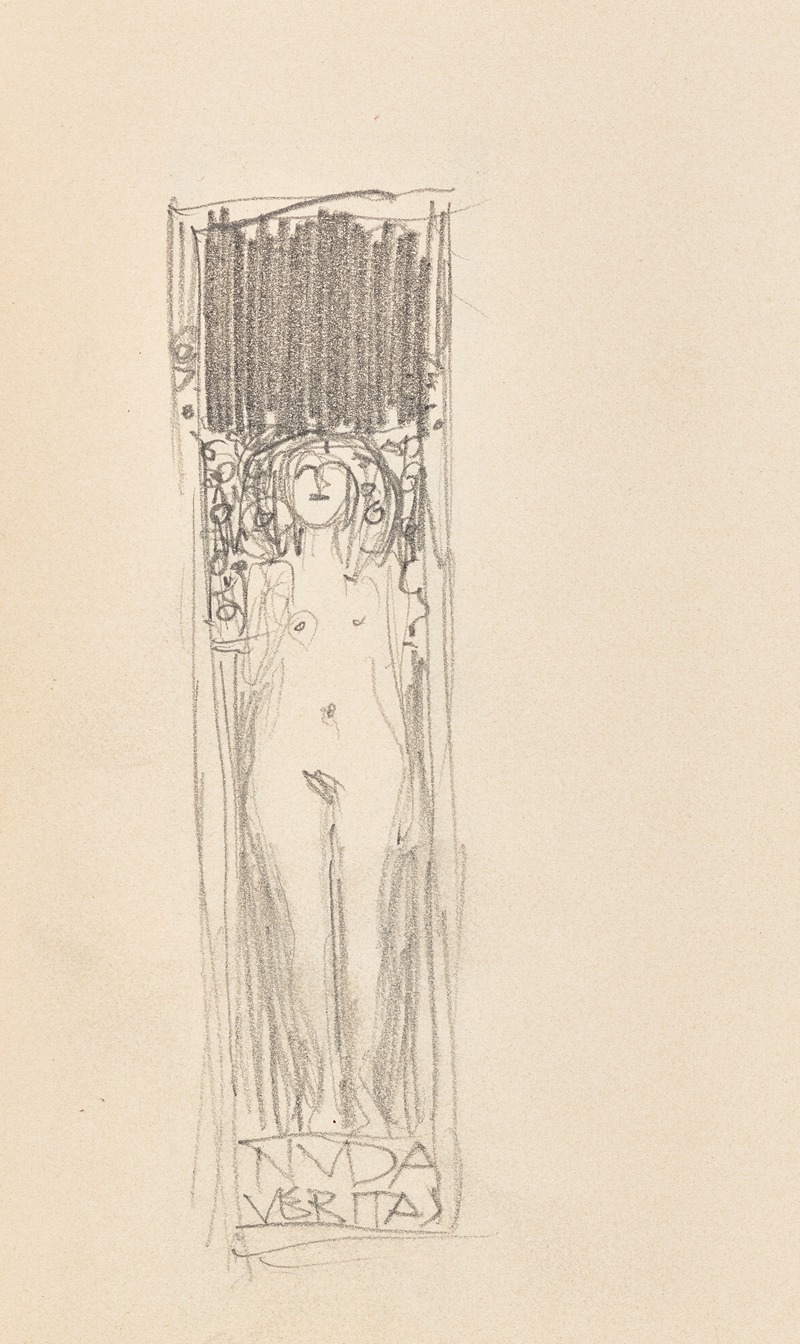
Design for the painting ‘Nuda Veritas’
A hand-painted replica of Gustav Klimt’s masterpiece Design for the painting ‘Nuda Veritas’, meticulously crafted by professional artists to capture the true essence of the original. Each piece is created with museum-quality canvas and rare mineral pigments, carefully painted by experienced artists with delicate brushstrokes and rich, layered colors to perfectly recreate the texture of the original artwork. Unlike machine-printed reproductions, this hand-painted version brings the painting to life, infused with the artist’s emotions and skill in every stroke. Whether for personal collection or home decoration, it instantly elevates the artistic atmosphere of any space.
Gustav Klimt, an Austrian symbolist painter, is renowned for his distinctive style and contribution to the Art Nouveau movement. One of his notable works is the painting "Nuda Veritas," completed in 1899. This piece is a striking example of Klimt's exploration of truth, beauty, and the human form, themes that frequently appear in his oeuvre.
"Nuda Veritas," which translates to "Naked Truth," is a powerful representation of Klimt's artistic philosophy and his response to the cultural and social dynamics of his time. The painting features a life-sized, nude female figure holding a mirror, a classical symbol of truth and self-reflection. The figure's direct gaze and unapologetic nudity challenge the viewer to confront the concept of truth without the veil of societal norms or conventions.
The composition of "Nuda Veritas" is both simple and profound. The woman stands against a richly decorated background, which is typical of Klimt's work, where he often juxtaposed intricate patterns with the human form. The use of gold and elaborate detailing in the background is reminiscent of Klimt's later works, such as "The Kiss" and "Portrait of Adele Bloch-Bauer I," where he employed gold leaf to create a sense of opulence and depth.
Klimt's "Nuda Veritas" also includes a quote from Friedrich Schiller, a German poet and philosopher, inscribed at the top of the painting. The quote reads, "If you cannot please everyone with your deeds and your art, please only a few. To please many is bad." This inscription reflects Klimt's own views on art and his defiance against the conservative art establishment of Vienna at the time. Klimt was a founding member of the Vienna Secession, a group of artists who sought to break away from traditional academic art and promote more modern, innovative approaches.
The painting was initially met with mixed reactions. While some praised its boldness and the skillful execution of Klimt's vision, others were scandalized by its frank depiction of nudity and the challenge it posed to conventional aesthetics. Despite the controversy, "Nuda Veritas" remains an important work in Klimt's career, illustrating his commitment to exploring complex themes through his art.
Today, "Nuda Veritas" is housed in the Österreichische Theatermuseum in Vienna, where it continues to be studied and admired for its artistic and historical significance. The painting is a testament to Klimt's enduring influence on modern art and his ability to provoke thought and discussion through his work. As with many of Klimt's pieces, "Nuda Veritas" invites viewers to reflect on the nature of truth and the role of art in society, making it a timeless piece that resonates with audiences even over a century after its creation.





